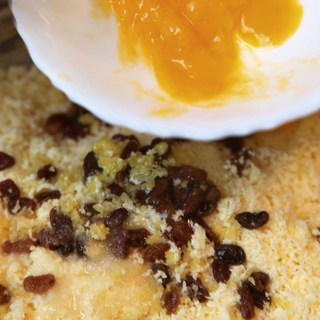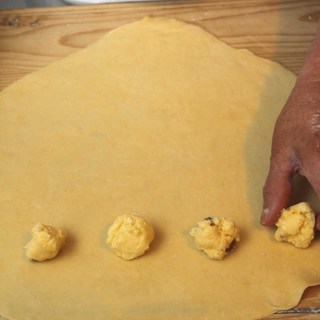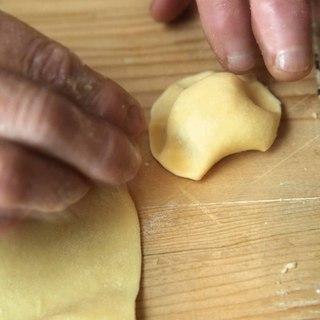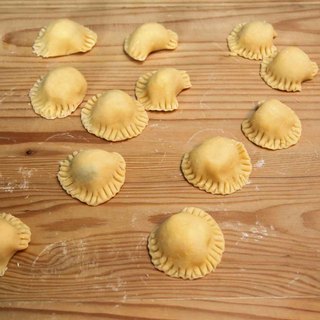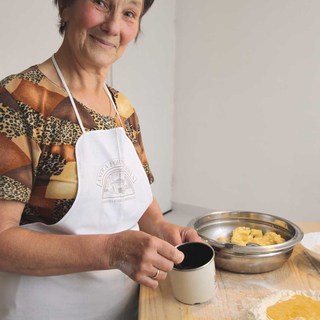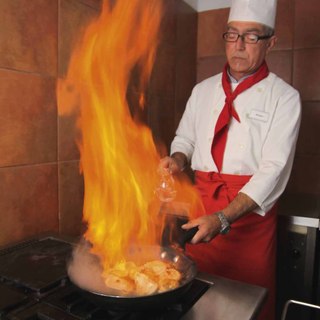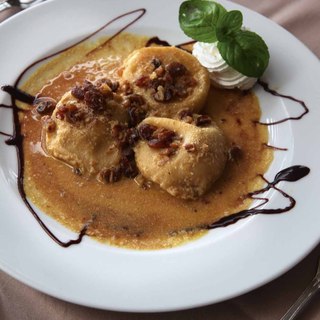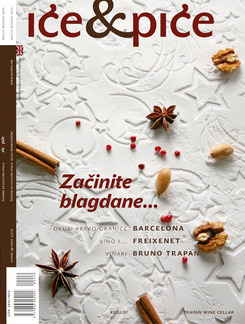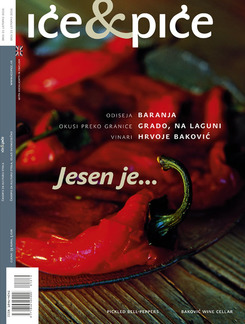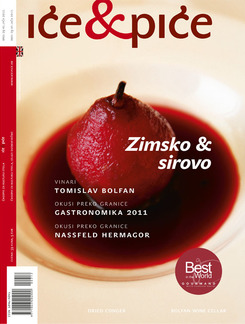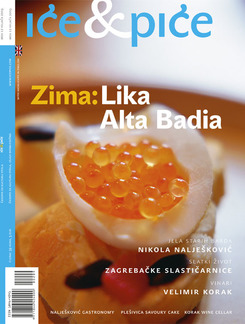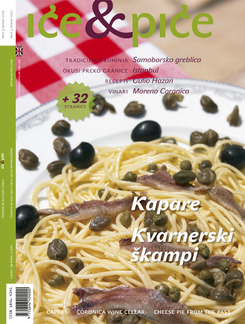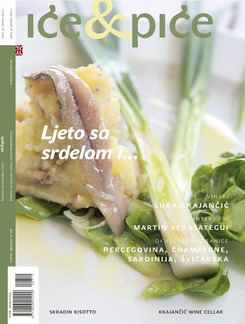There are many and diverse pasta specialties in Istria, like the popular fuži, gnocchi or macaroni. However, cheese-filled pasta has a special place in the local culinary tradition. In most parts of Istria you will be offered salted ravioli (rafioli), but in the Labin area or Labinština you will be served krafi, a special sweet variant of this gastronomic delight.
Though the border where ravioli become krafi and vice versa is not yet clear, krafi are undoubtedly part of the traditional cuisine in Vozilići, Plomin, Kršan and Labin, while ravioli find favor with the nearby Ćepić and Kožljak.
Local cooks will, regardless of their already slightly branded name labinski krafi, vote in favor of the local names like plominski or vozilički krafi, because in addition to secret tricks for preparing this delight mastered by the locals, there are differences in the way they are served: some serve them only with cheese, and others with a wine stew cooked from the domestic free-range hen. There is a special recipe for filled pasta cases typical of Plomin hinterland or Plominsko zagorje, but that is a new discovery and a different story.
In short, there are many reasons to visit Vozilići and Eleonora Bučić, who always makes krafi using her mother’s traditional recipe.
There are boiled and fried krafi, and the fried version seems to be a more recent version. In both cases pasta is filled with the same filling: 1kg semi-dry cow cheese (stored for about 10 days preferably), 8 eggs, about 300g of sugar, vanilla, grated lemon peel, dried raisins and a pinch of salt. Rum (originally brandy) and a handful of sugar are the last ingredients and the filling is done. It is important to pierce krafi before frying so the dough would not become puffy.
Newer recipes suggest adding sliced walnuts, hazelnuts or chocolate powder.
Krafi dough differs depending on whether krafi will be boiled or fried. For boiled krafi it is made from 1kg flour, 6 to 8 eggs (for dough to be tender, mix in all egg yolks and only half the amount of egg whites) a small amount of sugar and salt, and make the mixture smooth with some lukewarm water. For fried krafi add some baking yeast and a small amount of sugar melted in lukewarm water and butter (originally lard was used). This amount is sufficient for 70 to 80 small cases of pasta, depending on the way of wrapping and the amount of filling you will use, but less could be considered being cheap and not economical.
The wrapping technique once again shows the rich variety of local approaches. After she flattens part of the dough, Mrs. Bučić uses a spoon to put small amounts of filling on the dough, leaving some space between them, covers with the other part of flattened dough and uses a glass to cut krafi; then she connects the edges of each case of pasta using a fork.
The mark of fork on each krafi is like a signature.
Krafi are boiled in salted water and done as soon as they come to the surface and Mrs. Eleonora serves them sprinkled with grated cheese.
Krafi can also be deep fried in oil and Mrs. Eleonora serves them sprinkled with sugar.
Use what you have at home
Though the preparation of krafi seems simple, the secret is in the choice of domestic cheese and the amount of sugar and salt, which usually depends on the unique aroma of cheese and culinary experience.
However, krafi are not only an interesting traditional dish, but an excellent starting point for taking an individual approach and creativity and Valamar proves that in its hotels in Rabac on the Labin Riviera. One of Valamar’s interpretations of krafi was prepared for us by Walter Matošević, Chef de Cuisine at the Valamar Bellevue hotel in Rabac, who decided to flambé krafi. Therefore, he melted butter on a skillet, added some sugar and when it melted and started to become brownish he added boiled krafi, walnuts, raisins and brandy and flambéed the mixture.
Then he added some orange juice and whipping cream. This was krafi, a traditional main course, turned into an interesting and tasty dessert served at Istria themed dinner parties and on festive occasions.
In addition to an old local advice on how to cook a nice meal one should use whatever is in the kitchen cupboard, it appears that the culinary history of krafi and other dishes typical of the eastern coast of Istria were largely influenced by the local seamen who brought new and unfamiliar ingredients from their voyages.
A good example is nutmeg, which has been used in come local versions of krafi for a long time now. Seamen were not the only reason for the increase in the use of sugar. The increased standard of the local families had made it easier for them to buy sugar. Sugar could not be produced at home but it had to be bought and at a high price, so no wonder krafi were prepared only on special occasions and on holidays. However, in time, same as many other dishes, they have become a symbol of everyday bliss.
Growing interest in krafi and the valorization of this type of food were provoked by, of course, gourmet enthusiasts Patricija Zanketić and Mario Licul from Kršan Municipality, who traditionally organize Krafi Fest in July, offering everyone a chance to discover many interesting facts about this part of Istria.

